Nestled in the heart of Burgundy, Dijon is more than just a city—it’s a cultural and culinary jewel of France. Often referred to as the Mustard Capital, Dijon invites travelers with its rich history, world-class gastronomy, prestigious wine heritage, and stunning Gothic-Renaissance architecture. Whether you're a history enthusiast, a foodie, or a wine lover, Dijon offers a perfect blend of charm and sophistication.
Top Attractions in Dijon, France
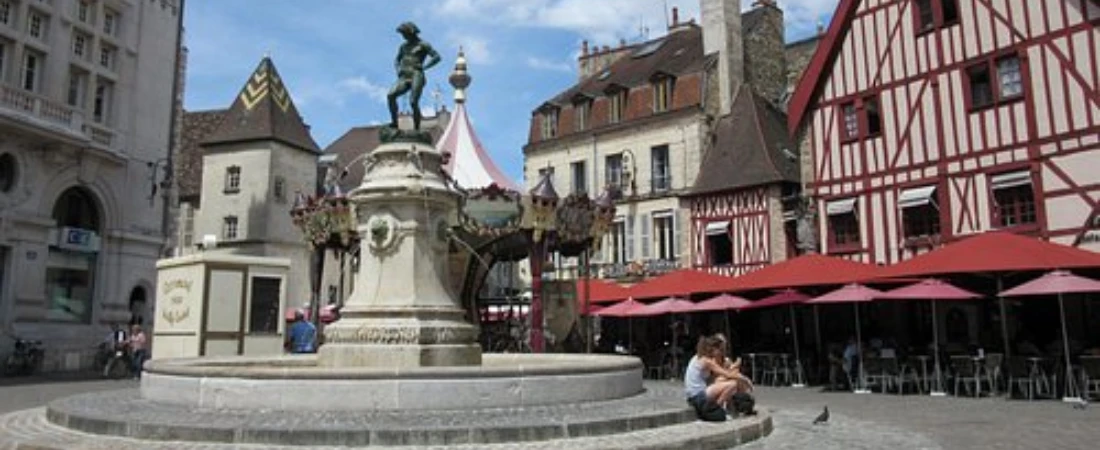
Dijon, the historic capital of the Burgundy region, is a city bursting with medieval charm, cultural richness, and architectural grandeur. Known as the “City of 100 Steeples,” it offers travelers a mix of Gothic, Renaissance, and Classical monuments, all within a walkable, cobbled city center. Below are the must-see attractions that capture Dijon’s spirit and heritage.
Palace of the Dukes of Burgundy (Palais des Ducs de Bourgogne)
- Place de la Libération, 21000 Dijon
- Open: Tues–Sun, 9:30 AM – 6:00 PM
- Free entry for permanent exhibitions
The Palace of the Dukes of Burgundy is Dijon’s crown jewel. Once the seat of power for the powerful Dukes of Burgundy, the palace is a magnificent blend of Gothic and Classicist architecture. Today, it houses the Musée des Beaux-Arts, one of France’s most prestigious art museums. The central Place de la Libération, designed by Jules Hardouin-Mansart (who worked on Versailles), opens up before the palace, offering one of the most iconic views in Dijon.
Inside the museum, you'll find medieval altarpieces, Renaissance art, and the elaborately carved tombs of the Dukes—Philippe le Hardi and Jean sans Peur—topped with stunning alabaster sculptures of mourning monks.
Insider Tip: Climb the Philippe le Bon Tower (46 meters) for panoramic views of the city.
Notre-Dame of Dijon (Église Notre-Dame de Dijon)
- Rue de la Préfecture, 21000 Dijon
- Open daily, free entrance
This 13th-century Gothic church is an architectural masterpiece with its three-tiered façade, grotesque gargoyles, and the famous Dijon Owl carved into the north side. Known locally as “La Chouette, the owl is believed to bring good luck when stroked with the left hand.
The church’s interior features remarkable stained-glass windows, a Cavaillé-Coll organ, and medieval statues. Outside, the mechanical Jacquemart Clock, installed in the bell tower, still strikes the hour with four automated figures.
Don’t Miss: Touch the owl carving with your left hand while making a wish—but don’t break tradition and use your right hand!
Musée de la Vie Bourguignonne (Museum of Burgundian Life)
- 17 Rue Sainte-Anne, 21000 Dijon
- Open: Tues–Sun, 9:30 AM – 6:00 PM
- Free entry
Housed in a 17th-century former Cistercian convent, this museum presents a vivid portrayal of everyday life in Burgundy from the 18th to early 20th centuries. Visitors can explore traditional costumes, household items, school settings, and local trades that formed the identity of the region.
The ground floor focuses on ethnographic displays, while the upper level presents reconstructions of 19th-century shops from Dijon—including a pharmacy, bakery, and mustard shop.
Great for families and cultural enthusiasts.
Musée Rude (Rude Museum)
- Rue Vaillant, 21000 Dijon
- Open: Tues–Sun, 9:30 AM – 6:00 PM
- Free entry
Named after Dijon-born sculptor François Rude, the Musée Rude is located in the former Church of Saint-Étienne. It houses plaster casts of his major works, including the iconic Departure of the Volunteers of 1792, also known as La Marseillaise, which adorns the Arc de Triomphe in Paris.
A quick but impressive stop for those interested in sculpture and French nationalism.
The Owl Trail (Parcours de la Chouette)
- Starts at Place Darcy; get a map at the Tourist Office or use the app
- Free self-guided walk
A charming and clever way to discover Dijon is by following the Parcours de la Chouette (Owl Trail)—a walking trail marked by 22 brass plaques set in the pavement. The trail leads you past the city's most important historic sites, hidden courtyards, and lesser-known gems.
Pro Tip: Buy the official trail booklet at the Dijon Tourist Office (11 Rue des Forges) or download the app for full details, fun trivia, and maps.
- Place François Rude (Place du Bareuzai)
- Centre-ville, 21000 Dijon
This picturesque square, often referred to as Place du Bareuzai, features half-timbered houses, a romantic fountain, street cafés, and shops. It’s a perfect place to stop for a coffee, try a glass of Kir (a local aperitif of white wine and crème de cassis), or simply people-watch.
The statue of a grape-stomping winemaker pays homage to Burgundy's winemaking tradition.
Jardin Darcy (Darcy Garden)
Place Darcy, 21000 Dijon
Dijon’s oldest public garden, Jardin Darcy, offers a green escape right next to the city center. It’s beautifully landscaped with terraces, fountains, and flowerbeds, and features the famous white stone bear sculpture created by François Pompon.
A peaceful spot to relax after exploring the Owl Trail.
Les Halles Market
- Rue Odebert, 21000 Dijon
- Open: Tues, Thurs, Fri, Sat (7 AM – 1:30 PM)
Designed by Gustave Eiffel, Les Halles is Dijon’s bustling covered market filled with regional products. From mustard and wine to cheese and pastries, it’s a paradise for foodies. Try local specialties like pain d’épices and Époisses cheese.
Visit on Saturday mornings when the market is at its liveliest.
Chartreuse de Champmol & Well of Moses
1 Boulevard Chanoine Kir, 21000 Dijon
Just outside the city center, this former Carthusian monastery is home to the Well of Moses, a Gothic masterpiece by Claus Sluter. Though the rest of the monastery was destroyed, the well remains a powerful symbol of Dijon’s medieval religious art.
Art historians regard it as one of the most important sculptures of the late Middle Ages.
Cité Internationale de la Gastronomie et du Vin
1 Rue de l’Hôpital, 21000 Dijon
Open daily
Various ticket options for tastings, exhibits, and workshops
Opened in 2022, this gastronomic center celebrates Dijon’s culinary legacy with interactive exhibits, cooking classes, food and wine pairings, and gourmet shops. It’s located at the site of the old hospital and connects perfectly to Dijon’s identity as a UNESCO City of Gastronomy.
Dijon Cuisine & Food Culture
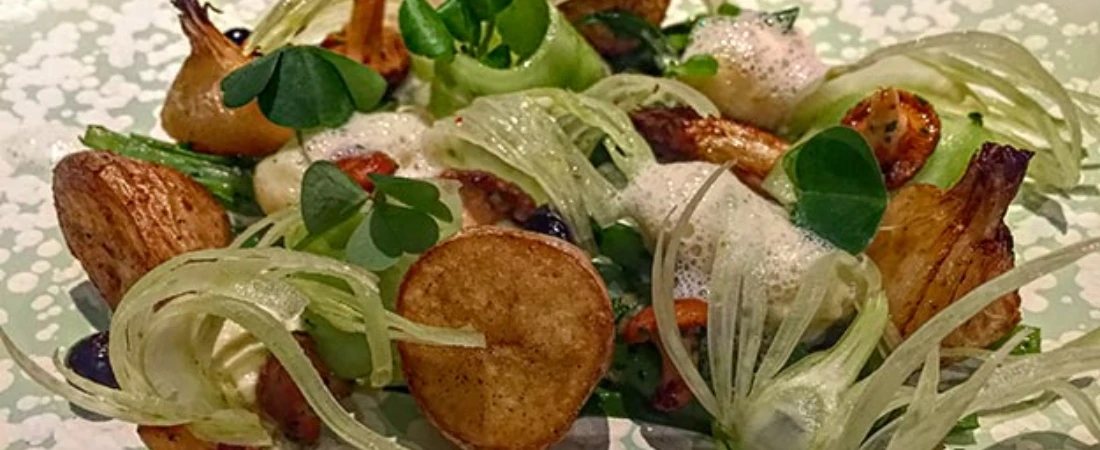
Dijon is internationally known for its mustard, but the city’s culinary identity runs far deeper. As the historic capital of Burgundy, one of France’s most celebrated gastronomic regions, Dijon offers a sensory experience defined by bold flavors, traditional techniques, and rich culinary heritage. Whether you’re dining in a rustic bistro, browsing the local markets, or enjoying wine pairings in a historic cellar, food in Dijon is always a cultural event.
Dijon Mustard: The Iconic Ingredient
When most people think of Dijon, the first word that comes to mind is “mustard”—and for good reason. Dijon mustard has been produced since the Middle Ages, with recipes tracing back to 1336. This sharp, smooth condiment is made using brown mustard seeds and white wine or verjuice, giving it a distinct tang that has become essential to French cuisine.
Today, you can visit La Moutarderie Fallot (a mustard mill in nearby Beaune with a shop in Dijon) or Maison Maille (32 Rue de la Liberté) to explore mustard in a variety of flavors: blackcurrant, truffle, tarragon, and more. These boutiques offer free tastings and specialty gift packs.
Mustard is used in everything from salad dressings and sauces to marinades and meats. Try poulet à la moutarde (mustard chicken), a beloved regional dish.
Classic Burgundian Dishes
Dijon’s traditional dishes are steeped in Burgundy’s rural and winemaking heritage. Expect rich flavors, wine-based sauces, and slow-cooked preparations.
Coq au vin – Chicken slow-cooked in red Burgundy wine with mushrooms, onions, garlic, and lardons. This dish exemplifies the region’s skill in marrying poultry with wine.
Boeuf bourguignon – Beef stew made with red wine, garlic, carrots, onions, and mushrooms. A hearty dish often served with potatoes or egg noodles.
Escargots de Bourgogne – Snails baked in garlic-parsley butter and traditionally served in their shells. Dijon is one of the best places in France to try this delicacy.
Oeufs en meurette – Poached eggs served in a red wine sauce with onions, mushrooms, and bacon. A signature Burgundy dish, typically served as a starter.
Most of these dishes can be enjoyed at traditional restaurants like Le Bouchon du Palais (4 Rue Vauban) or Chez Léon (19 Rue de la Liberté).
Sweets and Regional Baked Goods
Dijon is also known for its baked specialties. One of the most notable is pain d'épices, a spiced honey bread originally brought by monks. Soft and slightly sweet, it’s flavored with cinnamon, anise, and cloves, and pairs wonderfully with tea or wine.
Another local delight is nonnettes, small round cakes made of pain d'épices dough, filled with orange or blackcurrant jam and glazed with sugar. These were traditionally made by nuns, hence the name (from “nonne,” French for nun).
You can find freshly baked nonnettes and gingerbread at Mulot & Petitjean (13 Place Bossuet), a historic bakery that has been crafting Dijon’s sweets since 1796.
The Wine Culture of Dijon
Though the vineyards are just outside city limits, Dijon is an excellent base for exploring Burgundy’s famous wine region. The area is home to some of the world’s most prestigious wines, including Pinot Noir and Chardonnay.
The Route des Grands Crus, starting just south of Dijon, is a scenic drive or cycle route that passes through Côte de Nuits and Côte de Beaune vineyards. Names like Gevrey-Chambertin, Nuits-Saint-Georges, and Meursault are iconic among wine enthusiasts.
In Dijon, you’ll find many places to explore wine culture:
- La Source des Vins (3 Place du Théâtre): Boutique wine shop with tastings.
- Dr. Wine (5 Rue Musette): Upscale wine bar offering curated wine flights and food pairings.
- Cité Internationale de la Gastronomie et du Vin (1 Rue de l’Hôpital): Includes wine cellars, tasting rooms, and workshops.
Culinary Events and Gastronomy Fairs
Dijon’s reputation as a gourmet city is celebrated year-round through food festivals and public events.
- Foire Internationale et Gastronomique de Dijon – One of France’s largest food fairs, held annually in October–November. It gathers over 500 exhibitors showcasing wine, cheese, charcuterie, pastries, and regional dishes. Each year, a different country is featured as the guest of honor.
- Marché de Noël Gourmand (Gourmet Christmas Market) – Held during December, this market blends holiday spirit with local flavors—think spiced wine, pain d’épices, roasted chestnuts, and artisanal sweets.
- Les Jeudis Vins – Wine tastings hosted during summer evenings across various venues, perfect for sampling and learning in a casual setting.
Cooking Schools and Workshops
- Dijon offers opportunities to not just taste—but also learn to cook like a Burgundian.
- Ateliers de la Cité de la Gastronomie – Cooking workshops where you can prepare Burgundy specialties under the guidance of chefs.
- L’Atelier des Chefs Dijon – Offers French cooking classes in both French and English, great for travelers who want a hands-on culinary experience.
You can book these workshops online or through the Dijon Tourist Office. Many include wine pairings and take-home recipes.
Street Food and Casual Dining
While Dijon is famous for elegant restaurants, it also has a lively scene of casual eateries and gourmet street food.
- Les Halles Market – Stop by for take-away cheese, bread, olives, and pastries. Many locals assemble quick lunches here with fresh ingredients.
- Place Emile Zola – This lively square is full of cafes, crêperies, and brasseries offering affordable lunch menus and regional comfort food.
Popular casual dishes include:
- Croque-monsieur – A toasted ham and cheese sandwich with béchamel sauce.
- Galettes – Savory buckwheat crêpes with fillings like egg, cheese, and vegetables.
- Jambon persillé – Ham terrine with parsley jelly, often eaten cold as a snack or appetizer.
Dietary Notes for Visitors
Vegetarian travelers may find traditional Burgundian food a bit meat-heavy, but Dijon does have modern bistros and cafes with vegetarian or vegan options. Look for newer spots like SO Dijon (24 Rue du Château), which offer plant-based dishes.
Halal and kosher options are available in select areas, especially near Rue Monge, though they may be limited. As always in France, allergy information is typically labeled clearly in bakeries and restaurants.
Culture, Art & Museums in Dijon
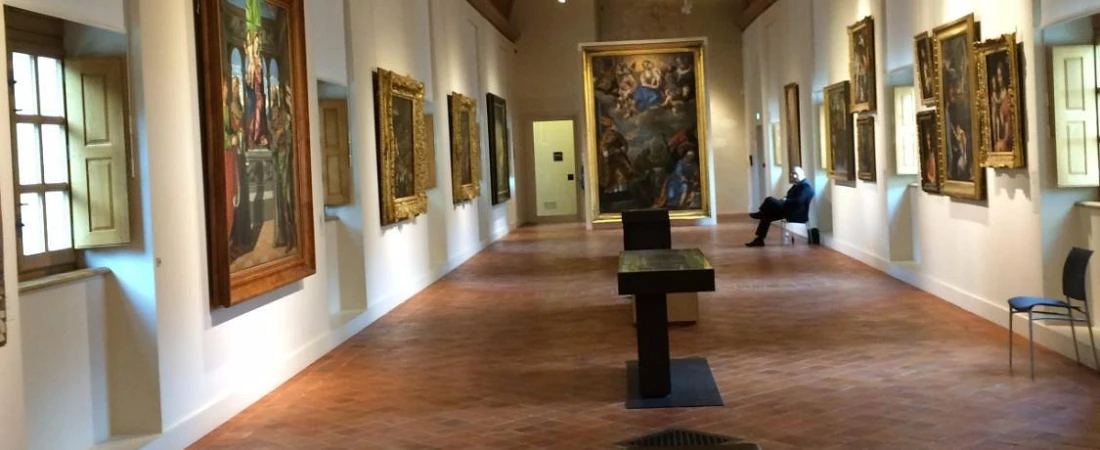
Dijon is a city of intellectual legacy, religious grandeur, and artistic finesse. It’s where medieval might meets Renaissance beauty, and modern creativity continues to thrive. As the former capital of the Duchy of Burgundy, Dijon flourished as a cultural and political powerhouse, drawing in architects, artists, and philosophers. Today, this heritage is beautifully preserved and accessible across its churches, palaces, art galleries, and museums.
Whether you're a lover of fine art, a history buff, or simply enjoy exploring unique local culture, Dijon offers a vibrant palette of experiences.
The Burgundian Legacy: Art Patronage and Power
The roots of Dijon’s cultural wealth trace back to the 14th and 15th centuries, when the Dukes of Burgundy ruled one of the most powerful regions in Europe. These rulers were generous patrons of the arts. Their court attracted prominent sculptors, painters, musicians, and intellectuals, establishing Dijon as a center of refinement.
This legacy of art patronage is still visible in the city’s numerous historic buildings and in its rich museum collections. Many structures, such as the Palace of the Dukes, are more than architectural monuments—they’re windows into a bygone cultural empire.
Musée des Beaux-Arts de Dijon
- Address: Palais des Ducs, Place de la Libération, 21000 Dijon
- Opening Hours: Tuesday to Sunday, 9:30 AM – 6:00 PM
- Entry Fee: Free for permanent exhibitions
The Musée des Beaux-Arts is arguably the most important cultural institution in Dijon—and one of the oldest art museums in France. Set inside the east wing of the Ducal Palace, the museum was founded in 1787 and has recently undergone extensive renovations.
Its vast collection spans from Egyptian antiquities to 21st-century art, but it is especially strong in medieval and Renaissance works. Some highlights include:
- Tombs of the Dukes of Burgundy: Stunning Gothic sculptures of mourning figures (pleurants) surround the elaborate sarcophagi.
- Flemish and Dutch paintings: Works by Veronese, Brueghel, and Rubens.
- 19th-century French paintings: Including works by Courbet and Delacroix.
- Modern art galleries: Featuring local and international artists.
The layout is clear and logical, making it ideal for both quick visits and in-depth art exploration.
Musée de la Vie Bourguignonne
- Address: 17 Rue Sainte-Anne, Dijon
- Opening Hours: Tuesday to Sunday, 9:30 AM – 6:00 PM
- Entry Fee: Free
This museum offers a vivid insight into everyday life in Burgundy between the 18th and early 20th centuries. Located in a former Cistercian convent, it features:
- Traditional clothing and regional costumes
- Reconstructed interiors of homes and schoolrooms
- Artifacts from rural professions and trades
- Old Dijon storefronts from the 1800s, including a mustard shop and bakery
It’s a wonderful way to connect with the traditions, values, and lifestyles of the region’s past. Ideal for families and cultural travelers.
Musée Rude
- Address: Rue Vaillant, Dijon (in the former Church of Saint-Étienne)
- Opening Hours: Tuesday to Sunday, 9:30 AM – 6:00 PM
- Entry Fee: Free
Dedicated to François Rude, a sculptor born in Dijon in 1784, this small museum focuses on plaster casts and models of his most famous works. The highlight is a full-scale reproduction of La Marseillaise, also known as The Departure of the Volunteers of 1792, which adorns the Arc de Triomphe in Paris.
Set within the atmospheric former Église Saint-Étienne, the museum itself is a piece of art, blending spirituality and sculpture in a hauntingly beautiful way.
Sacred Art and Religious Architecture
Dijon’s cultural identity is tightly linked to its religious history. The city has dozens of churches, chapels, and cathedrals that reflect centuries of architectural evolution.
Notre-Dame de Dijon
A 13th-century Gothic masterpiece with iconic gargoyles, a mechanical clock (Jacquemart), and the famous Owl of Dijon. The exterior is striking, and the interior, though modest, houses beautiful stained-glass windows.
Saint-Bénigne Cathedral
This Romanesque-Gothic cathedral dates back to the 6th century but was rebuilt in the 13th. Its crypt is one of the most atmospheric in France and contains relics of Saint Benignus, the city’s patron saint.
Chartreuse de Champmol
Though mostly destroyed, this former Carthusian monastery was once the spiritual center of the Dukes of Burgundy. Today, visitors can admire Claus Sluter’s Well of Moses, a sculptural masterpiece that marks a high point in late Gothic art.
Street Art and Modern Expression
While Dijon’s strength lies in its historical and classical art, the city is no stranger to modern expression. In recent years, murals, pop-up galleries, and street installations have been appearing across neighborhoods like Grésilles and Port du Canal.
Local organizations like Why Note and La Vapeur organize multimedia art shows and music events throughout the year. Dijon's universities and art schools also nurture a new generation of creative minds.
For contemporary art lovers, a visit to Interface Galerie or Le Consortium Museum (37 Rue de Longvic) offers a fresh perspective. The latter is known for avant-garde exhibitions and international artist collaborations.
Libraries, Theaters, and Cultural Institutions
La Bibliothèque Municipale de Dijon
Located in the former Collège des Godrans, this public library contains over 600,000 books and a rare manuscript collection. It often hosts cultural exhibitions, literary discussions, and community events.
Grand Théâtre de Dijon
This 19th-century opera house stages ballet, classical music, and modern theatre performances. A cultural cornerstone for locals, the Grand Théâtre is admired for its opulent red velvet interiors and world-class acoustics.
Auditorium de Dijon
A sleek, modern concert venue that hosts everything from orchestral performances to jazz festivals. It’s the home of the Orchestre Dijon Bourgogne, one of France’s best regional orchestras.
Annual Cultural Events
Dijon’s cultural calendar is packed year-round with events that showcase art, performance, and local identity:
- Festival Art Danse – A celebration of contemporary dance each spring.
- Journées du Patrimoine (Heritage Days) – Held in September, many historic sites open to the public for free with special guided tours.
- Nuit des Musées – A nighttime art event where museums stay open late and offer unique programs and performances.
These events attract locals and tourists alike and offer immersive ways to experience Dijon’s cultural richness.
Nightlife and Entertainment in Dijon

Dijon may be known for mustard, history, and fine dining, but its nightlife holds its own unique charm. As a vibrant university city and regional capital, Dijon offers a mix of cozy wine bars, student pubs, live music venues, cultural events, and seasonal festivals that keep the evenings lively.
While you won’t find the nonstop party atmosphere of Paris or Marseille, Dijon’s nightlife is more intimate, welcoming, and distinctly Burgundian—centered around wine, conversation, and good taste.
Evening Culture in the Historic Center
The heart of Dijon’s nightlife lies in the Old Town (Centre-Ville), where narrow streets, timber-framed buildings, and quaint squares come alive at dusk. Streets like Rue Berbisey, Rue Monge, and Place Emile Zola are lined with bars, cafés, and brasseries where locals and visitors gather for a relaxed evening.
Outdoor terraces are especially popular in spring and summer, while in colder months, candlelit interiors create a warm, inviting atmosphere. Start the night with an apéritif—like Kir, a local specialty made from white wine and blackcurrant liqueur.
Best Wine Bars in Dijon
Burgundy is one of the most prestigious wine regions in the world, and Dijon is its northern gateway. Wine bars are the highlight of Dijon’s evening scene—often offering curated tasting experiences, small plates, and expert advice.
Dr. Wine
Address: 5 Rue Musette, 21000 Dijon
This upscale wine bar is a favorite among locals and tourists alike. It offers an extensive wine list, including rare Burgundy labels, along with cheese and charcuterie boards. The atmosphere is stylish but approachable, and staff are happy to make recommendations.
La Cave Se Rebiffe
Address: 14 Rue Quentin, 21000 Dijon
This hidden gem has a rustic feel, great ambiance, and rotating wine selections from small local producers. Its small size makes it feel like a true insider experience.
Le Bout du Monde
Address: 1 Rue Musette, 21000 Dijon
This bar blends literature, music, and wine in a cozy setting. Books line the walls, and the relaxed vibe makes it perfect for quiet conversations and tastings.
Student Bars and Pubs
Dijon is home to Université de Bourgogne, which means there's a strong student presence. This keeps the bar scene energetic, especially in the areas around Rue Berbisey, Rue Jean-Jacques Rousseau, and Rue de la Chouette.
Flannery’s Irish Pub
Address: 16 Rue Quentin, 21000 Dijon
A popular haunt for students and travelers alike, this Irish pub offers live sports, quiz nights, and a broad beer selection. The lively atmosphere makes it a great place to socialize.
Le Deep Inside
Address: 17 Rue Bannelier, 21000 Dijon
This basement bar has a more alternative vibe, featuring retro décor, indie music, and themed party nights. It draws a mixed crowd, from students to local creatives.
Barberousse
Address: 17 Rue Berbisey, 21000 Dijon
A Caribbean-themed rum bar known for its loud music and small dancefloor. It's a lively late-night spot that stays open until 2 a.m. on weekends.
Live Music and Entertainment Venues
Dijon has an impressive variety of live music venues that cater to fans of rock, jazz, classical, and contemporary sounds. Some venues also combine food and drinks with concerts or DJ sets.
La Vapeur
Address: 42 Avenue de Stalingrad, 21000 Dijon
La Vapeur is the city’s largest live music venue. It hosts major national and international artists, as well as up-and-coming talent across genres. Its modern facilities and strong cultural programming make it a must-visit for music fans.
Le Cellier
Address: 1 Rue Musette, 21000 Dijon
This underground wine cellar hosts jazz nights and acoustic performances in a unique atmosphere. It's intimate, elegant, and perfect for a relaxed yet classy evening.
Why Note
A contemporary music collective in Dijon that organizes performances, artist residencies, and public workshops. They focus on experimental and modern classical music and often use unconventional spaces like galleries and courtyards.
Cultural Events After Dark
Dijon’s rich cultural calendar includes night-time events that go beyond the bar scene.
Nuit des Musées (Night of the Museums)
Held in May, this annual event allows visitors free entry to museums well into the night. Exhibitions, live performances, and guided tours give a new perspective on Dijon’s cultural treasures.
Summer Light Shows
From June to September, "Les Féeries Nocturnes" transform Dijon’s monuments with projection mapping and music. The façade of the Palace of the Dukes becomes a canvas for storytelling and visual art, creating an immersive evening experience for all ages.
Outdoor Cinema and Street Performances
During summer, open-air cinema nights are held in Dijon’s parks and squares, often featuring French classics and family-friendly films. Street performers, buskers, and pop-up theatre also bring spontaneous fun to the city streets.
Nightclubs and Late-Night Spots
While Dijon isn't known for all-night raves, there are a few clubs and dance bars for those who want to stay out late.
Le Chat Noir
Address: 56 Rue Monge, 21000 Dijon
A stylish cocktail lounge by early evening, it becomes a DJ-driven party spot late at night. The music tends to favor house, techno, and electro.
Le 88
Address: 88 Rue Jean-Jacques Rousseau, 21000 Dijon
More underground and edgy, Le 88 offers live electronic sets, themed nights, and a younger crowd. It often collaborates with art and fashion events.
La Cour du Roy
Address: 7 Rue Musette, 21000 Dijon
A club-style venue with pop music, dance floors, and happy hours that cater to students and tourists. Expect a typical French club vibe: crowded, energetic, and loud.
Evening Dining: Where to Eat Late
Dinner in Dijon generally starts between 7 and 8 p.m., but some restaurants offer late-night options or tasting menus that stretch well into the evening.
Recommended for dinner with ambiance:
- L’un des Sens (14 Rue Jean-Jacques Rousseau): For creative, seasonal French cuisine with wine pairings.
- DZ’Envies (12 Rue Odebert): Modern bistro offering tasting menus with local ingredients.
- Chez Copains (33 Rue Bannelier): Friendly tapas-style dishes and a wide wine list, open late.
Safety and Local Tips
Dijon is considered very safe for evening exploration, especially in the city center. That said, like any city, stay aware of your surroundings and stick to well-lit areas if walking late at night.
Public transport (trams and buses) generally runs until midnight. After that, taxis and ride-sharing services are available, but be aware that availability may be limited on weekdays.
Dress codes are casual in most bars and wine lounges, but upscale restaurants and certain clubs may expect smart-casual attire.
Best Restaurants in Dijon
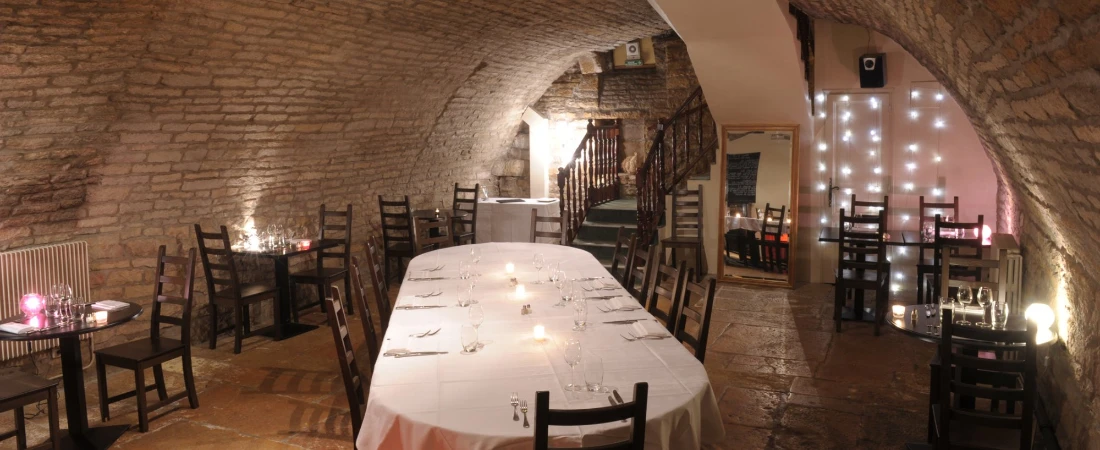
Dijon is a haven for food lovers. As the capital of Burgundy, it boasts not only a rich culinary heritage but also a contemporary food scene that respects tradition while embracing creativity. From elegant fine-dining establishments to casual bistros and hidden gems, Dijon’s restaurants reflect the soul of the region—rich in flavor, deeply rooted in terroir, and always paired with good wine.
Whether you're after a luxurious multi-course dinner, a hearty local specialty, or a relaxed café experience, here’s where to eat in Dijon for an unforgettable gastronomic experience.
William Frachot – Michelin-Starred Elegance
- Address: 5 Rue Michelet, 21000 Dijon
- Cuisine: Modern French (Fine Dining)
- Michelin Stars: ★★
Located inside Hostellerie du Chapeau Rouge, this restaurant by Chef William Frachot is one of Dijon’s most acclaimed dining destinations. Known for reinterpreting Burgundian classics with a modern twist, the tasting menus are carefully curated and elegantly presented. Expect creative dishes like veal sweetbreads with black garlic, Dijon mustard ice cream, or eggplant with blackcurrant and cocoa.
The wine cellar includes some of the best Burgundy has to offer, and the service is impeccable without being stuffy.
Perfect For: Special occasions, food connoisseurs, romantic evenings.
Loiseau des Ducs – Gastronomic Heritage
- Address: 3 Rue Vauban, 21000 Dijon
- Cuisine: Gourmet French (Burgundy-Inspired)
- Michelin Stars: ★
Part of the prestigious Bernard Loiseau group, this restaurant is housed in a historic mansion and offers a sophisticated setting with contemporary decor. Chef Louis-Philippe Vigilant presents refined versions of Burgundian classics such as escargots with parsley butter, coq au vin, and Bresse chicken with vin jaune.
They also offer a tasting menu with optional wine pairings.
Tip: Reserve in advance, especially during weekends.
L’un des Sens – Wine and Seasonal Plates
- Address: 14 Rue Jean-Jacques Rousseau, 21000 Dijon
- Cuisine: French, Seasonal
- Atmosphere: Chic wine bar-bistro hybrid
A local favorite for food and wine lovers. With its minimalist decor, intimate setting, and wine-focused menu, L’un des Sens excels at highlighting Burgundy’s terroir. You can pair regional wines with small seasonal plates that focus on vegetables, charcuterie, cheeses, and fresh herbs.
It’s perfect for those who want to try different flavors and sip on lesser-known Burgundy labels.
DZ’envies – Modern Twist on Tradition
- Address: 12 Rue Odebert, 21000 Dijon
- Cuisine: Modern French
- Ambience: Contemporary bistro
A stylish restaurant offering inventive, colorful dishes rooted in local flavors. Chef David Zuddas uses market-fresh ingredients to create plates that look as good as they taste. Expect to see wasabi cream with foie gras, quail with beetroot chips, or crayfish risotto.
The lunch menu is excellent value, and the tasting menu allows adventurous foodies to explore unexpected combinations.
Le Bouchon du Palais – Authentic and Hearty
- Address: 4 Rue Vauban, 21000 Dijon
- Cuisine: Traditional Burgundian
- Setting: Cozy and rustic
If you’re looking for a warm, welcoming place to sample real Burgundian comfort food, this is the place. With its red-checked tablecloths, wooden furniture, and handwritten chalkboard menus, it feels like a true French home kitchen.
Signature dishes include:
- Boeuf bourguignon
- Jambon persillé (parsleyed ham terrine)
- Oeufs en meurette
- Tarte Tatin for dessert
It’s a popular place with locals and tourists alike, so reservations are highly recommended.
Chez Léon – Old World Charm
- Address: 19 Rue de la Liberté, 21000 Dijon
- Cuisine: Burgundian Bistro
- Highlight: Value for money
One of Dijon’s most loved traditional restaurants, Chez Léon serves generous portions of regional favorites in a charming old-town setting. The service is friendly and efficient, and the wine list offers affordable Burgundy selections.
Great options include duck confit, mustard chicken, and a wide variety of regional cheeses for dessert.
So Dijon – Creative & Plant-Based Friendly
- Address: 24 Rue du Château, 21000 Dijon
- Cuisine: Fusion, vegetarian options
- Vibe: Modern, casual
A refreshing departure from heavy meat-based cuisine, So Dijon is a trendy café-style spot offering vegetarian and vegan-friendly options. Their menu includes creative bowls, flatbreads, and fusion dishes like falafel burgers and sweet potato gnocchi.
They also have great desserts (vegan chocolate cake and chai-spiced cookies) and serve Dijon-roasted coffee.
Good for: Brunch, lunch, or a light dinner.
Les Halles Food Market Eateries
- Address: Rue Odebert, 21000 Dijon
- When to Visit: Tuesdays, Thursdays, Fridays, Saturdays (7 AM – 1:30 PM)
Les Halles isn’t just a market—it’s a food destination. Alongside buying fresh produce, meats, and cheeses, you can enjoy prepared food stalls offering:
- Croque-monsieur
- Quiche lorraine
- Fresh oysters and champagne
- Mini pain d'épices and éclairs
Some stalls have seating areas or stand-up counters. This is a perfect spot for a quick, authentic, and affordable meal with the buzz of a traditional French market.
La Fine Heure – Underrated Gem
- Address: 36 Rue Jeannin, 21000 Dijon
- Cuisine: Local-French fusion
- Experience: Understated excellence
A neighborhood restaurant where the focus is entirely on quality food and wine. Expect high-end flavors at fair prices, and a tranquil atmosphere ideal for a peaceful meal.
Their daily-changing menu reflects seasonal ingredients and fresh market finds. Wines are all from small Burgundy producers and perfectly paired.
Quick Bites and Street Food Spots
For a faster but delicious experience, Dijon offers casual spots with standout local fare:
- La Comédie (26 Rue de la Liberté): Best for crêpes, paninis, and coffee.
- Tartin’Art (16 Rue du Château): Specializes in gourmet open-faced sandwiches.
- Brasserie des Beaux-Arts (near the museum): Casual bistro with fixed-price lunch menus and outdoor seating.
If you’re traveling on a budget or need a quick lunch between museum visits, these options provide local flavors without a long wait.
Transportation & Getting Around Dijon

Dijon is a compact, walkable city that blends historical charm with modern convenience. Navigating its cobbled lanes, tram-lined boulevards, and picturesque outskirts is remarkably easy, thanks to its efficient public transport, well-planned bike paths, and pedestrian-friendly core. Whether you’re arriving from Paris or exploring the Burgundy countryside, Dijon makes travel smooth and scenic.
In this section, you’ll find everything you need to know about arriving in Dijon, using local transportation, and exploring beyond the city center.
Getting to Dijon
By Train
Dijon is well connected to major French and European cities via the TGV (high-speed train) network.
- From Paris: Just 1 hour 40 minutes from Paris Gare de Lyon to Dijon Ville via direct TGV.
- From Lyon: Around 2 hours.
- From Geneva: 2.5 to 3 hours, with a scenic route through Burgundy.
- From Strasbourg: 2 hours by direct train.
Dijon Ville Station is centrally located (approx. 10–15 minutes' walk to the Old Town), and offers direct access to taxis, buses, trams, and luggage lockers.
Tip: Book train tickets early via SNCF Connect to secure discounts.
By Car
If you prefer flexibility, renting a car gives you the freedom to explore Burgundy’s wine trails, villages, and countryside.
- From Paris: About 3–3.5 hours via A6 and A38 highways.
- From Lyon: Approx. 2 hours via A6/A31.
Rental cars are available from Dijon train station or airport. Street parking in Dijon is limited in the center, but underground garages and parking lots are available near Place Darcy, Place Grangier, and Gare Dijon Ville.
By Plane
Dijon’s local Dijon-Bourgogne Airport is no longer in regular commercial service. The nearest major airport is Lyon-Saint Exupéry (approx. 2 hours away by train or car). For international travelers, arriving via Paris Charles de Gaulle or Geneva and then connecting by train is most convenient.
Public Transport in Dijon: Divia
DiviaMobilités is the official transport network for Dijon, operating trams, buses, bike-sharing, and parking services. It’s one of France’s best small-city networks—eco-friendly, clean, and simple to use.
The Dijon Tram System
Dijon’s modern tram network is made up of two main lines:
- Line T1: Connects the city center to the university and hospital.
- Line T2: Runs from the northern suburb of Valmy to Chenôve in the south.
Both lines intersect in the city center, with key stops like:
- Gare Dijon Ville (train station)
- Place Darcy (main square)
- République (access to museums and Old Town)
Trams run every 6–10 minutes during the day and slightly less frequently in the evening. Most run from 5:30 AM to around 12:30 AM.
City Buses
The Divia bus system includes over 20 lines covering Dijon and nearby towns. Buses are reliable, safe, and affordable. Main hubs include:
- Place Darcy
- République
- Gare Dijon Ville
Night Bus (Liane Nocturne): Runs on Thursdays to Saturdays until 1:30 AM, ideal for getting back after a night out.
Fares and Tickets
- Single Ride: €1.40 (valid for 1 hour on trams/buses)
- 10-Ride Pass: €12.40
- Day Pass (Pass 24h): €4.20 (unlimited rides for 24 hours)
- Youth & Family Discounts available
Tickets can be purchased:
- At tram stops (via machines)
- Inside buses (exact change needed)
- At Divia kiosks (e.g., Gare Dijon Ville, Place Darcy)
- Through the Divia mobile app
Always validate your ticket when boarding—fine for unvalidated tickets is €50+.
Bike and E-Bike Rentals
Dijon is extremely bike-friendly, with more than 200 km of bike lanes and flat terrain ideal for casual cycling. Whether you want to tour vineyards or explore urban neighborhoods, cycling is a great option.
DiviaVélo (Public Bike Sharing)
- Location: 40+ bike stations across the city
- Rates:
- Free for first 30 minutes
- €0.50 for the next 30 minutes
- €1.50/hour after
You'll need a credit/debit card to register at a kiosk or via the DiviaVélo app.
Electric Bikes
E-bikes are available via private rental shops or Bourgogne Randonnées, offering half-day, full-day, or multi-day rental options. Perfect for trips to nearby Marsannay-la-Côte or Route des Grands Crus.
Walking Around Dijon
Dijon’s city center is a designated pedestrian zone, making walking the best way to discover its rich architectural and cultural sites.
- The Owl Trail (Parcours de la Chouette): A 22-stop walking route marked by brass owl symbols in the pavement, guiding you past historical landmarks.
- Rue de la Liberté: The city’s main shopping street, connecting Place Darcy to Place de la Libération.
- Rue Verrerie & Rue des Forges: Charming medieval streets with half-timbered houses, artisan shops, and wine bars.
Most major attractions, restaurants, museums, and cafes are within a 15-minute walk radius.
Day Trips and Regional Transport
Want to explore outside Dijon? There are several charming towns and wine regions nearby, easily accessible by regional train or car.
By TER Train
- Beaune: 20 minutes (famous for wines and Hospices de Beaune)
- Nuits-Saint-Georges: 15–20 minutes
- Chalon-sur-Saône: 45 minutes
- Montbard: 35 minutes (for Fontenay Abbey, a UNESCO site)
Tickets for regional TER trains can be purchased at Dijon Ville station or via the SNCF app.
Taxis and Ride-Sharing
Taxis in Dijon are available at:
- Train Station (Gare Dijon Ville)
- Place Darcy
- Place Wilson
Average fares:
- €8–€12 for short trips within the city
- Night and weekend surcharges apply
You can also use Uber and local apps like Heetch, though availability can vary during off-hours.
Car Rentals & Driving
For travelers wanting to explore the Route des Grands Crus, Burgundy’s countryside, or nearby medieval villages like Flavigny-sur-Ozerain, renting a car is highly recommended.
Car rentals are available at:
- Dijon Ville Station
- Local agencies (e.g., Europcar, Avis, Hertz)
Driving tips:
- Parking in the city center is limited; use underground garages.
- Most highways (autoroutes) have tolls.
- Speed limits: 50 km/h in town, 80–130 km/h outside.
Accessibility in Dijon
Dijon is actively improving accessibility for travelers with limited mobility:
- Trams and buses are low-floor and wheelchair-accessible.
- Public spaces, museums, and major sites have ramps and adapted facilities.
- Divia offers specific travel services for disabled passengers upon request.
Best Time to Visit Dijon, France

Dijon is a city of timeless charm, but when you choose to visit can greatly influence your experience. With its blend of medieval architecture, wine culture, mustard markets, and seasonal cuisine, each time of year in Dijon offers something unique. Whether you're after vineyard walks, festive food fairs, or fewer crowds, this guide will help you pick the perfect time to explore the mustard capital of France.
Visiting Dijon in Spring (March to May)
Why spring is ideal:
- Mild temperatures, perfect for walking
- Fewer crowds than summer
- Blooming gardens and vineyards
- Good hotel rates before the summer rush
In spring, Dijon slowly awakens from its winter slumber. The Parc de la Colombière and the Botanical Gardens come to life with blossoms, and outdoor café culture resumes.
Spring is ideal for:
- Exploring the Owl Trail
- Enjoying early-season wine tastings in nearby villages
- Picnicking with fresh pain d’épices and local cheeses
Events in Spring:
- Printemps de l'Europe (April): A cultural festival celebrating Dijon’s European connections, with concerts, dance, and local food markets.
- Jazz sur la Place (May): Open-air jazz performances in Place de la Libération.
Travel Tip: Light layers and an umbrella are useful. Rain showers can happen but are usually brief.
Summer in Dijon (June to August)
Why summer is peak season:
- Warm weather and long days
- Festivals, outdoor dining, and vineyard visits
- Best time for countryside excursions
Summer transforms Dijon into a vibrant, sun-soaked destination. Locals and tourists flock to Place François Rude, Place de la Libération, and the market squares, where music and wine flow freely.
Top activities:
- Wine tours in the Côte de Nuits and Marsannay-la-Côte
- Visiting nearby towns like Beaune, Semur-en-Auxois, or Flavigny
- Attending food tastings and terrace lunches
- Night walks and light shows on historical monuments
Festivals in Summer:
- Les Estivades (June-July): Street theatre, circus, and music for all ages.
- Les Nuits d’Orient (July): A celebration of global culture through art, dance, and cuisine.
- Nocturnes de Dijon: Nighttime guided tours and special museum evenings.
Downsides of summer:
- Higher prices for accommodation
- Crowds in Old Town and popular restaurants
- Occasionally hot days (above 30°C)
Travel Tip: Book ahead. If you prefer quieter moments, schedule early-morning explorations.
Autumn in Dijon (September to November)
Why autumn is the season of flavor:
- Harvest time in Burgundy
- Perfect for wine tastings and food festivals
- Mild weather and golden landscapes
Autumn is arguably the best time to visit Dijon for food and wine lovers. The vineyards surrounding the city are busy with harvest, and markets overflow with mushrooms, chestnuts, grapes, and game meats.
Highlights of autumn:
- Scenic walks along Route des Grands Crus
- Visiting Hospices de Beaune during wine auctions
- Sampling freshly made coq au vin and Dijon mustard
- Autumn photography in vineyards and medieval streets
Top Events:
- La Fête de la Gastronomie (late September): A nationwide festival with special tasting menus and culinary demonstrations.
- La Paulée de Dijon (October): Traditional end-of-harvest wine celebration with food stalls and music.
- International Gastronomy Fair (Foire Internationale et Gastronomique): One of France’s largest food fairs, held in November. Over 500 exhibitors, international cuisine, and cooking shows.
Travel Tip: Early October is ideal—vibrant foliage, wine events, and fewer tourists than summer.
Winter in Dijon (December to February)
Why winter is cozy and quiet:
- Fewer tourists
- Romantic atmosphere with festive lights
- Warm comfort food and cozy wine bars
Winter in Dijon is quiet but atmospheric. Streets are decorated for the holidays, restaurants serve hearty dishes, and museums are calm and crowd-free.
Enjoy:
- Hot mulled wine at Christmas markets
- Classic winter meals like boeuf bourguignon and pot-au-feu
- Exploring Musée des Beaux-Arts without crowds
- Taking a wintery stroll through the Ducal Palace square
Festive Events:
- Dijon Christmas Market (Marché de Noël): Held from late November to December in Place de la Libération and Place Darcy. It includes artisan stalls, a merry-go-round, light shows, and a skating rink.
- Festival Modes de Vie (Feb): Celebrates cultural diversity through art, film, and music.
Downsides:
- Shorter days (sunset around 5 PM)
- Some wine cellars and countryside attractions close for the season
Travel Tip: Pack warm layers, scarves, and gloves. Accommodation is more affordable, and many boutique hotels offer winter promotions.
Dijon is far more than just the birthplace of mustard — it’s a city where history, gastronomy, culture, and charm come together in every cobbled street and every glass of Burgundy wine. Whether you're wandering through the medieval alleyways of the Old Town, following the iconic Owl Trail, tasting coq au vin in a traditional bistro, or sipping Pinot Noir in a hidden vineyard, Dijon invites you to slow down and savor every moment.

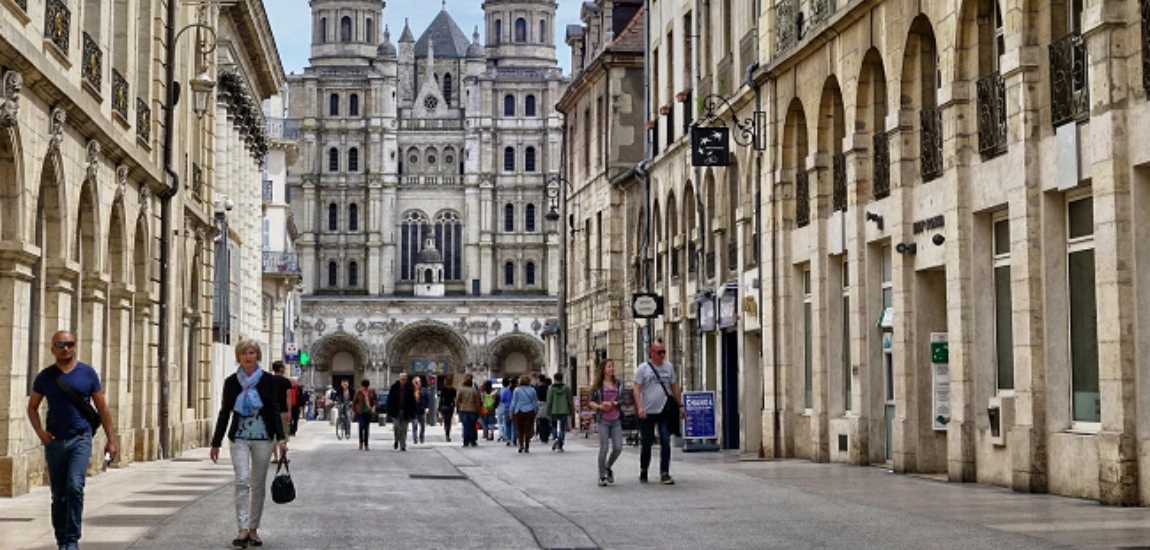

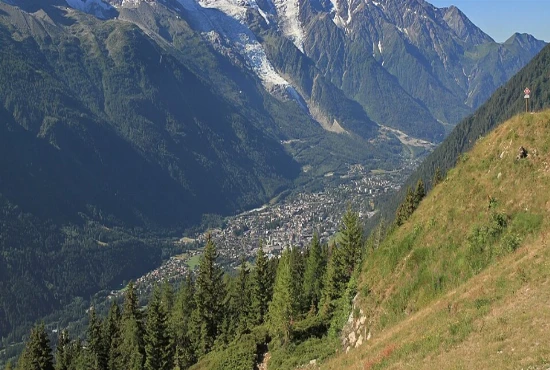
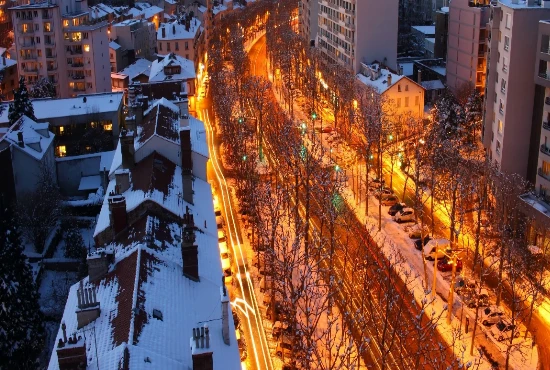

Leave a Reply